
Patient Focus. Expertise. Technology.
Patient Resources
Patient Forms & Information
- Patient Portal
- Notice of Privacy Practices Screening & Diagnosis
- Breast Cancer Screening & Diagnosis
- Breast Cancer Ductal Carcinoma
- Breast Cancer Invasive
- Breast Cancer Metastatic
- Breast Ultrasound Form
- Breast MRI Patient Form
- Screening Mammo Form
- CT Screening Form
- MRI Screening Form
- New York State Breast Cancer Screening Legislation
- New York State Dense Breast Legislation
- Notice of Privacy Practices – English
Community Services
Windsong is providing these third parties as options in the community for our patients in treatment.
Post-mastectomy clothing and accessories.
To learn more about Au Naturel visit: aunaturelboutique.com
Cancer Rehab and Recovery
- Buffalo Therapy Service: Williamsville NY – (716) 580-7360
- Degraff Memorial Hospital: N. Tonawanda NY – (716) 690-2031
Acupuncture Works provides a holistic approach to healing and works in tandem with your medical provider to reduce symptoms.
Volunteers at the Pink Pillow Project provide newly diagnosed patients at Windsong Breast Care with a pillow that, when placed under the arm, will aid in their post surgical recovery.
To learn more about the Pink Pillow project visit: thepinkpillowproject.com
Hope for 2 offers free support for women diagnosed with cancer while pregnant.
To inquire about supportive services call: 800-743-4471 or email :info@hopefortwo.org
Custom Dietetics, P.C. is a group of registered Dietitians/Nutritionists who are NYS certified and work with patients to improve their health outcomes by improving eating habits and nutrition. Call their Williamsville office at 716-626-7415.
Polar Cold Caps – provide a proven, non-invasive method to preserve your own hair while maintaining your privacy during chemotherapy treatment.
To learn more about Polar Cold Caps visit: polarcoldcaps.com
Knitted Knockers are special handmade breast prosthesis for women who have undergone mastectomies or other procedures to the breast. Please inquire at Windsong during your visit.
Hope Chest Buffalo offers FREE exercise and paddling classes to provide a unique fitness and wellness program for Breast Cancer Survivors.
For more information inquire at: hopechestbuffalo@gmail.com
Look Good Feel Better Program Virtual Workshops
A FREE, non-medical, all-volunteer service provided to newly diagnosed Breast Cancer patients
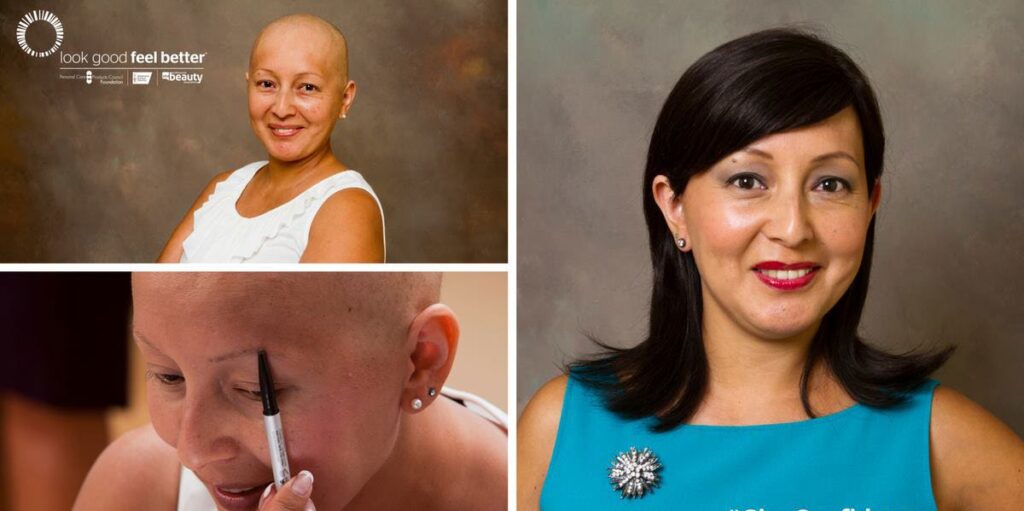
Look Good Feel Better Live! – Virtual Workshops
LGFB Virtual Workshops provide live instruction, tips, and tricks for dealing with visible side effects of cancer treatment. These free, one-hour, online group workshops can be done from the comfort and privacy of home.
Available sessions:
• Skin care and cosmetics application;
• Wigs and head coverings, including scarves and turbans;
• Body image, wardrobe and styling tips;
• Scarf tying techniques to boost confidence.
Click below to register and request a free Look Good Feel Better makeup kit. Please register at least two weeks in advance to allow time for kit delivery before the workshop.
Site Referral Code: WI14221
For questions, please call Jenna Baehr, Windsong Breast Care Program Coordinator at 716-631-2500 x2208.
Virtual Q & A Session for Newly Diagnosed Breast Cancer Patients

About Our Virtual Q & A Session
Breast Cancer doesn’t pause during the COVID-19 pandemic. We understand being diagnosed with breast cancer is a confusing and scary time, but it does not mean you have to fight alone.
Patients are encouraged to watch our virtual Q & A session in the comfort of your own home. Dr. Katherine O’Donnell, Medical Director of Windsong Breast Care, answers frequently asked questions patients have when they are newly diagnosed with breast cancer.
During the video, Dr. O’Donnell will provide a brief overview of important services including:
- Radiology
- Breast Surgery
- Medical Oncology
- Radiation Oncology Genetics
To learn more about our supportive services including physical therapy (lymphedema), nutrition, supportive counseling, and custom clothing boutique, please visit our Supportive Services tab on our website.
“I was very confused about my new cancer diagnosis. The information provided at the Q&A session was very informative and answered my questions, but more importantly, it put me more at ease.”
– Francesca, Windsong Breast Cancer Survivor, Q & A Attendee
Anatomy of the Breast

Anatomy of the Breast
- A – Ducts
- B – Lobules
- C – Dilated section of duct to hold milk
- D – Nipple
- E – Fat
- F – Pectoralis major muscle
- G – Chest wall/rib cage
Enlargement
- A. Normal duct cells
- B. Basement membrane
- C. Lumen (center of duct)
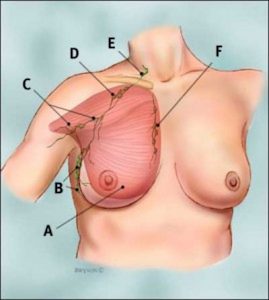
Anatomy of the Breast
Recommendations for Screening Mammograms and Finding Breast Cancer Early
The American Cancer Society (ACS) recommends the following guidelines for finding breast cancer early in women without symptoms:
Mammogram
Women age 40 and older should have a screening mammogram every year and should keep on doing so for as long as they are in good health. While mammograms can miss some cancers, they are still a very good way to find breast cancer.
Clinical breast exam
Women in their 20s and 30s should have a clinical breast exam (CBE) as part of a regular exam by a health expert at least every 3 years. After age 40, women should have a breast exam by a health expert every year. It might be a good idea to have the CBE shortly before the mammogram. You can use the exam to learn what your own breasts look and feel like.
How to Do a Monthly Breast Self-Exam
How to Do a Monthly Breast Self-Exam
Lie down on your back and place your right arm behind your head. The exam is done while lying down, not standing up. This is because when lying down the breast tissue spreads evenly over the chest wall and is as thin as possible, making it much easier to feel all the breast tissue.
Use the finger pads of the 3 middle fingers on your left hand to feel for lumps in the right breast. Use overlapping dime-sized circular motions of the finger pads to feel the breast tissue.
Use 3 different levels of pressure to feel all the breast tissue. Light pressure is needed to feel the tissue closest to the skin; medium pressure to feel a little deeper; and firm pressure to feel the tissue closest to the chest and ribs. It is normal to feel a firm ridge in the lower curve of each breast, but you should tell your doctor if you feel anything else out of the ordinary. If you’re not sure how hard to press, talk with your doctor or nurse. Use each pressure level to feel the breast tissue before moving on to the next spot.
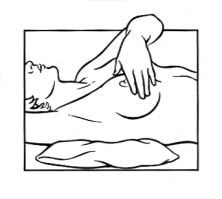
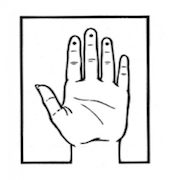
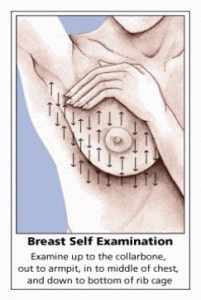
Move around the breast in an up and down pattern starting at an imaginary line drawn straight down your side from the underarm and moving across the breast to the middle of the chest bone (sternum or breastbone). Be sure to check the entire breast area going down until you feel only ribs and up to the neck or collar bone (clavicle).
There is some evidence to suggest that the up-and-down pattern (sometimes called the vertical pattern) is the most effective pattern for covering the entire breast without missing any breast tissue.
Repeat the exam on your left breast, putting your left arm behind your head and using the finger pads of your right hand to do the exam.
While standing in front of a mirror with your hands pressing firmly down on your hips, look at your breasts for any changes of size, shape, contour, or dimpling, or redness or scaliness of the nipple or breast skin. (The pressing down on the hips position contracts the chest wall muscles and enhances any breast changes.)
Examine each underarm while sitting up or standing and with your arm only slightly raised so you can easily feel in this area. Raising your arm straight up tightens the tissue in this area and makes it harder to examine.
This procedure for doing breast self-exam is different from previous recommendations. These changes represent an extensive review of the medical literature and input from an expert advisory group. There is evidence that this position (lying down), the area felt, pattern of coverage of the breast, and use of different amounts of pressure increase a woman’s ability to find abnormal areas.
Additional Online Resources that offer information and news about cancer. Please direct queries to the patient resource sections for the most appropriate information.
Publication of information or reference in the Patient Resources is reviewed and approved by WBC based on the nationally recognized cancer society’s including, but not inclusive to; American Cancer Society, National Comprehensive Cancer Network and National Cancer Institute.
Weekly Multidisciplinary Patient Conference
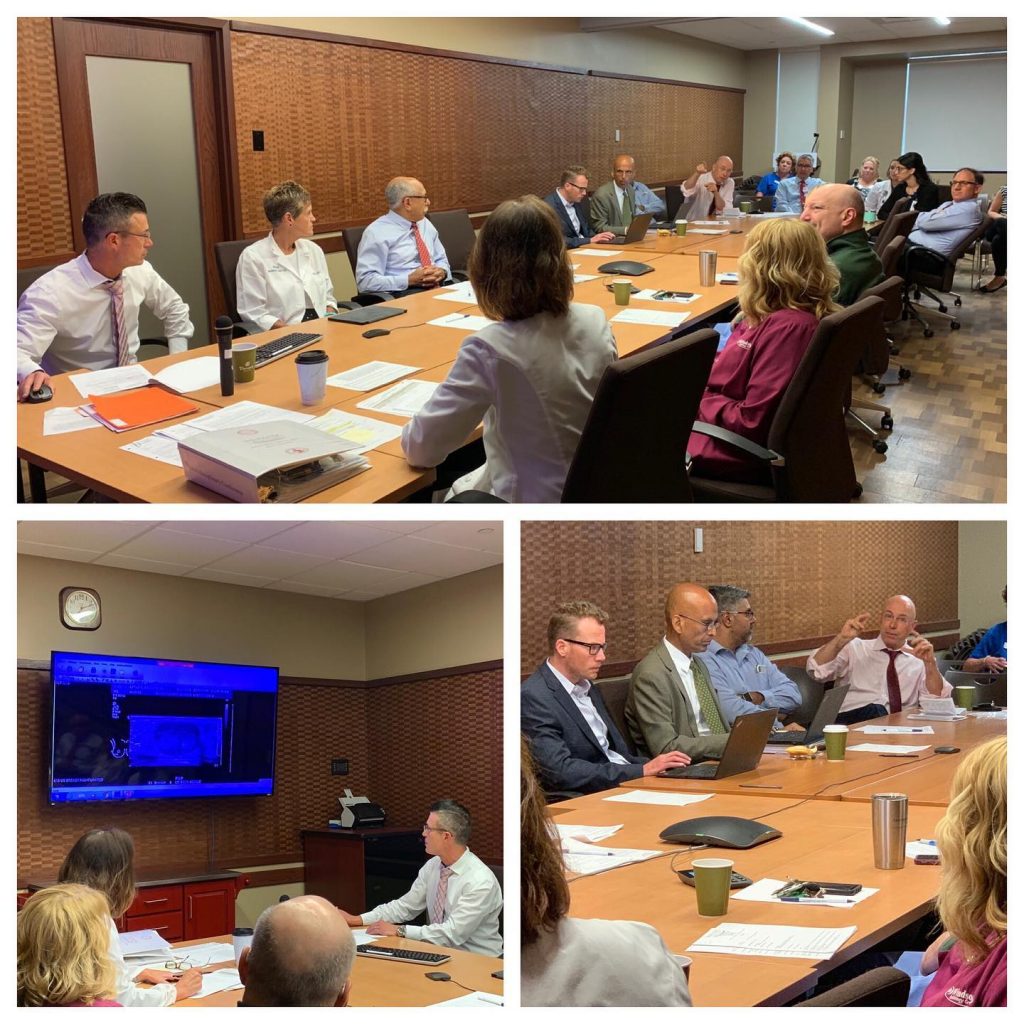
During our weekly 1 hour medical conferences, our breast surgeons collaborate with a Radiologist, Pathologist, Medical and Radiation Oncologist to determine the best individualized treatment plan for our patients. Diagnostic images are also presented and reviewed along with the pathology slides to determine appropriate staging. An invitation to the referring physician is included to improve timely and accurate communication.
This prospective case presentation ensures that patients newly diagnosed or currently under treatment have access to a comprehensive evaluation, including staging, treatment management and follow up surveillance. The conferences are integral to the constant improvement of the care for our breast cancer patients by contributing to the patient management process and outcomes, and providing education to physicians and staff in attendance.This meeting meets the University of Buffalo School of Medicine and Biomedical Sciences educational program requirements and is eligible for CME credit.






